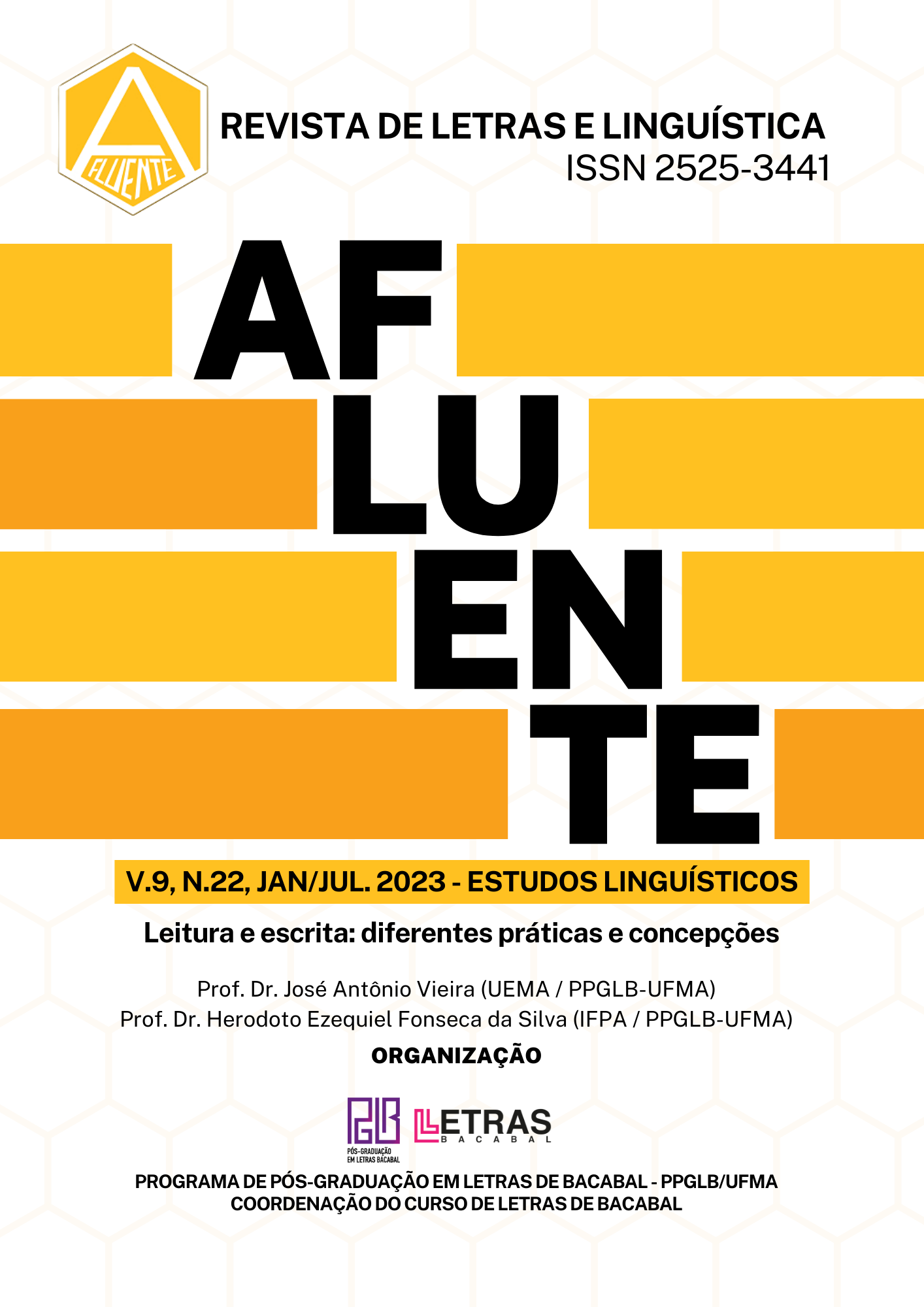VARIATION IN BRAZILIAN PORTUGUESE: THE USE OF THE ANIME ONE PIECE (1999) FOR MOTHER TONGUE REFLECTION
A UTILIZAÇÃO DOANIME ONE PIECE (1999) PARA A REFLEXÃO DE LÍNGUA MATERNA
DOI:
https://doi.org/10.18764/2525-3441v8n23.2023.39Keywords:
Animes, Pedagogical Support, Teaching, Mother TongueAbstract
ABSTRACT: Japanese pop culture is becoming more and more widespread and consumed by contemporary Western youth (ALENCAR, 2010). Since manga and anime are types of narratives appreciated by the students' class (LUYTEN, 2012), applying them in the classroom for mother tongue teaching can raise positive results. Casseb-Galvão; Neves (2017) argue that inserting dubbing and subtitling of television and film works in the school environment can also help educators in Portuguese classes. For this reason, the present work aimed to present the Japanese anime One Piece (1999) as a useful pedagogical material to reflect the variation of Brazilian Portuguese. The dubbing of the anime demonstrated the use of different linguistic elements, such as age and social variations, to characterize its characters. Consequently, the One Piece (1999) narrative makes it possible to discuss pertinent issues, such as linguistic hierarchization, which results in social hierarchization. Also, the linguistic adequacy that the characters of the straw hat troupe make in different situations allows us to state that functional bidialectalism (SOARES, 2017) is one of the probable paths for the social ascension of students belonging to the popular classes in the Brazilian capitalist system. The article evokes for analysis the characters Luffy, Chopper, Nami, Usopp, Sanji, Robin and some other secondary, naval officers, to think about the stigmatized and prestigious varieties. Therefore, it is hoped that with this research, animes can be seen as beneficial pedagogical contributions to the teaching of birth language.
Downloads
References
ALENCAR, Thiago. O animê: públicos, consumo e modos de apropriações culturais. Monografia (Bacharel em Produção em Comunicação e Cultura). Universidade Federal da Bahia: 2010. Disponível em: < https://repositorio.ufba.br/handle/ri/31011> Acesso em: 02 set. 2022.
AMADO, Jorge. Capitães de Areia. São Paulo: Companhia das Letras, 2009.
BAGNO, Marcos. Português ou Brasileiro? Um convite à pesquisa. São Paulo: Parábola Editorial, 2017.
BORTONI-RICARDO, Stella. Manual de Sociolinguística. São Paulo: Editora Contexto, 2014.
CALVET, Louis-Jean. Sociolinguística: uma introdução crítica. São Paulo: Editora Parábola, 2002.
CASSEB-GALVÃO, Vânia; NEVES, Maria. O todo da língua: teoria e prática do ensino de português. São Paulo: Parábola Editorial, 2017.
COELHO, Izete Lehmkuhl, GÖRSKI, Edair Maria, MAY, Guilherme Henrique, SOUZA, Christiane Maria N. de. Para conhecer a Sociolinguística. São Paulo: Contexto, 2015.
FERRAREZI, Celso Jr. Pedagogia do silenciamento: a escola brasileira e o ensino de língua materna. São Paulo: Parábola Editorial, 2014.
KOYAMA-RICHARD, Brigitte. Mil anos de mangá. São Paulo: Estação Liberdade, 2022.
LUYTEN, Sonia. Mangá: o poder dos quadrinhos japoneses. São Paulo: Hedra, 2012.
ODA, Eiichiro. One Piece. São Paulo: Panini, 2022.
ONE PIECE. Direção: Konosuke Uda. Produção: Toei Animation. Japão: Toei Animation,
Disponível em: < https://www.crunchyroll.com/pt-br/one-piece> Acesso em: 26 ago. 2022.
SANTONI, Pablo. Animês e Mangás: a identidade dos adolescentes. Dissertação (Mestrado em Educação em Artes Visuais). Universidade de Brasília: 2017. Disponível em: < https://repositorio.unb.br/handle/10482/24480?mode=full> Acesso em: 01 set. 2022.
SOARES, Magda. Linguagem e escola: uma perspectiva social. São Paulo: Editora Contexto, 2014.
Downloads
Published
How to Cite
Issue
Section
License
Copyright (c) 2023 Afluente: Revista de Letras e Linguística

This work is licensed under a Creative Commons Attribution 4.0 International License.
Direitos autorais Afluente: Revista Eletrônica de Letras e Linguística
Este trabalho está licenciado com uma Licença Creative Commons - Atribuição 4.0 Internacional.














